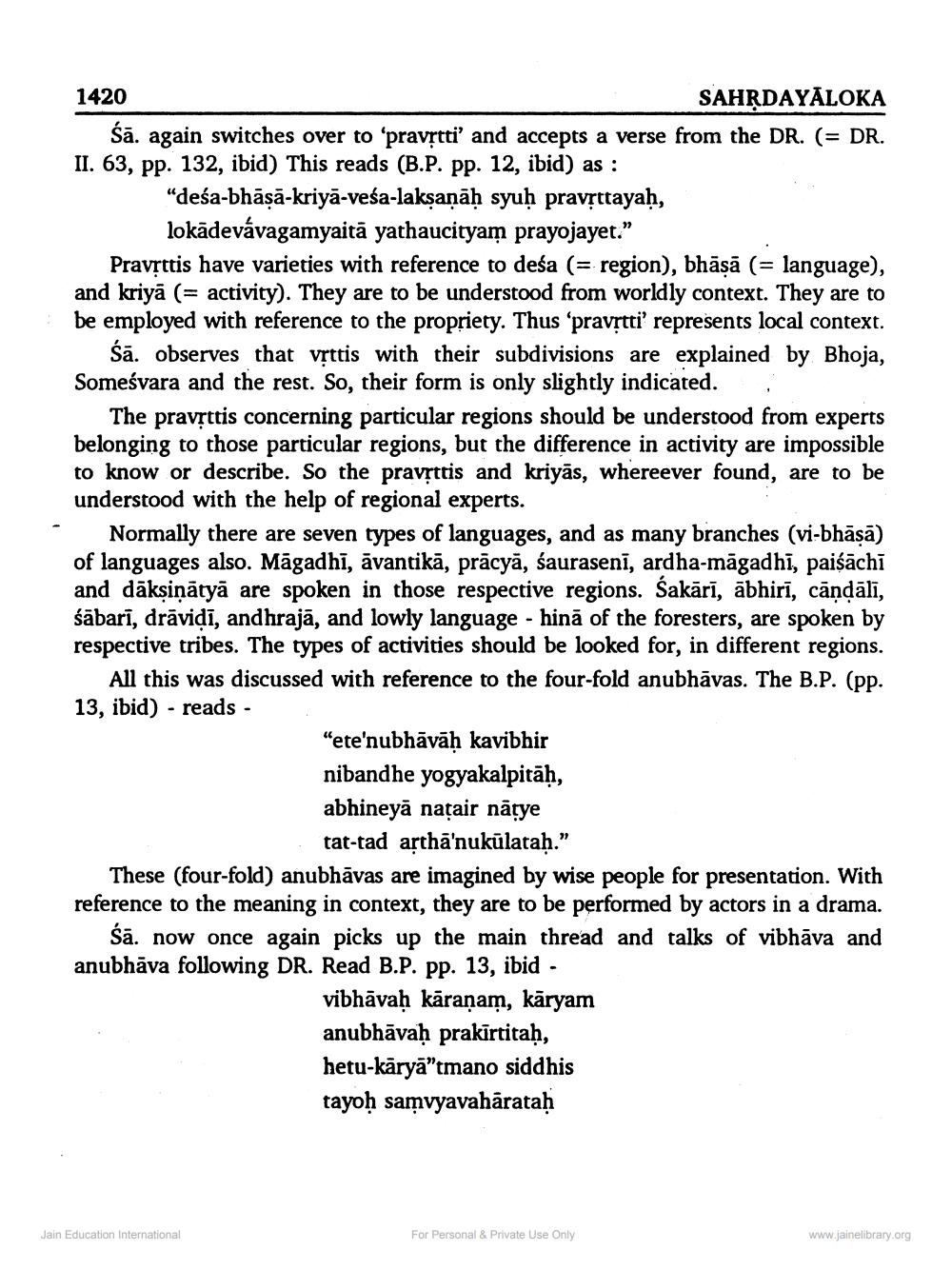________________
1420
SAHṚDAYALOKA
Śā. again switches over to 'pravṛtti' and accepts a verse from the DR. (= DR. II. 63, pp. 132, ibid) This reads (B.P. pp. 12, ibid) as :
"deśa-bhāṣā-kriya-veśa-lakṣaṇaḥ syuḥ pravṛttayaḥ, lokādevávagamyaitā yathaucityam prayojayet."
Pravṛttis have varieties with reference to deśa (= region), bhāṣā (= language), and kriyā (= activity). They are to be understood from worldly context. They are to be employed with reference to the propriety. Thus 'pravṛtti' represents local context.
Śā. observes that vṛttis with their subdivisions are explained by Bhoja, Someśvara and the rest. So, their form is only slightly indicated.
The pravṛttis concerning particular regions should be understood from experts belonging to those particular regions, but the difference in activity are impossible to know or describe. So the pravṛttis and kriyās, whereever found, are to be understood with the help of regional experts.
Normally there are seven types of languages, and as many branches (vi-bhāṣā) of languages also. Māgadhī, āvantikā, prācyā, śaurasenī, ardha-māgadhī, paiśāchī and dākṣiṇātyä are spoken in those respective regions. Śakārī, ābhirī, cāṇḍālī, śābarī, drāviḍī, andhrajā, and lowly language - hina of the foresters, are spoken by respective tribes. The types of activities should be looked for, in different regions.
All this was discussed with reference to the four-fold anubhavas. The B.P. (pp. 13, ibid) reads -
-
"ete'nubhāvāḥ kavibhir nibandhe yogyakalpitāḥ, abhineyā naṭair nātye tat-tad aṛtha'nukülataḥ."
These (four-fold) anubhavas are imagined by wise people for presentation. With reference to the meaning in context, they are to be performed by actors in a drama.
Śā. now once again picks up the main thread and talks of vibhāva and anubhava following DR. Read B.P. pp. 13, ibid -
vibhāvaḥ kāraṇam, kāryam anubhāvaḥ prakīrtitaḥ, hetu-käryä"tmano siddhis
Jain Education International
tayoḥ samvyavahārataḥ
For Personal & Private Use Only
www.jainelibrary.org




